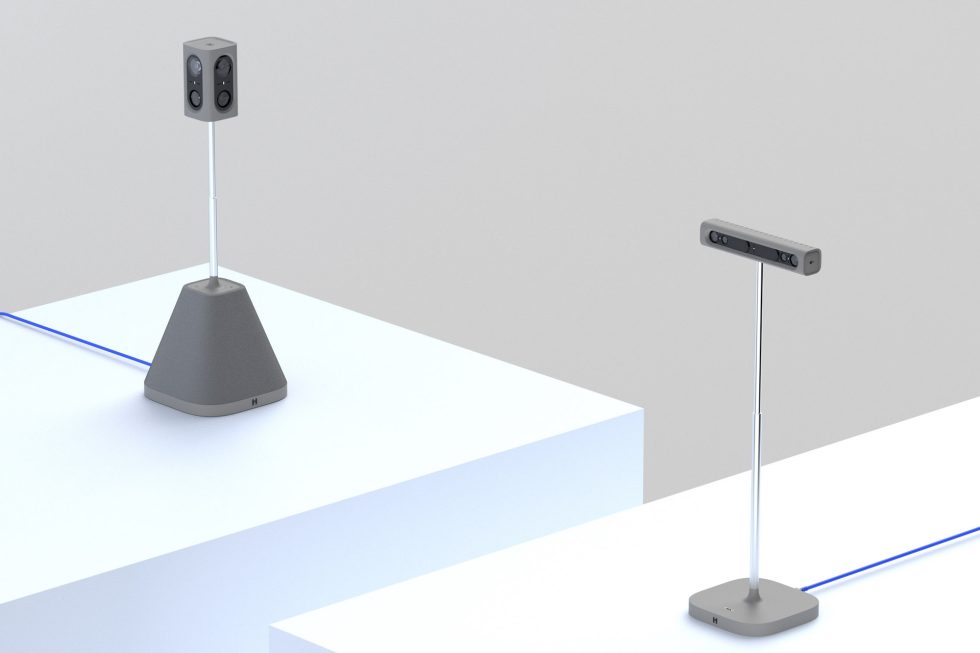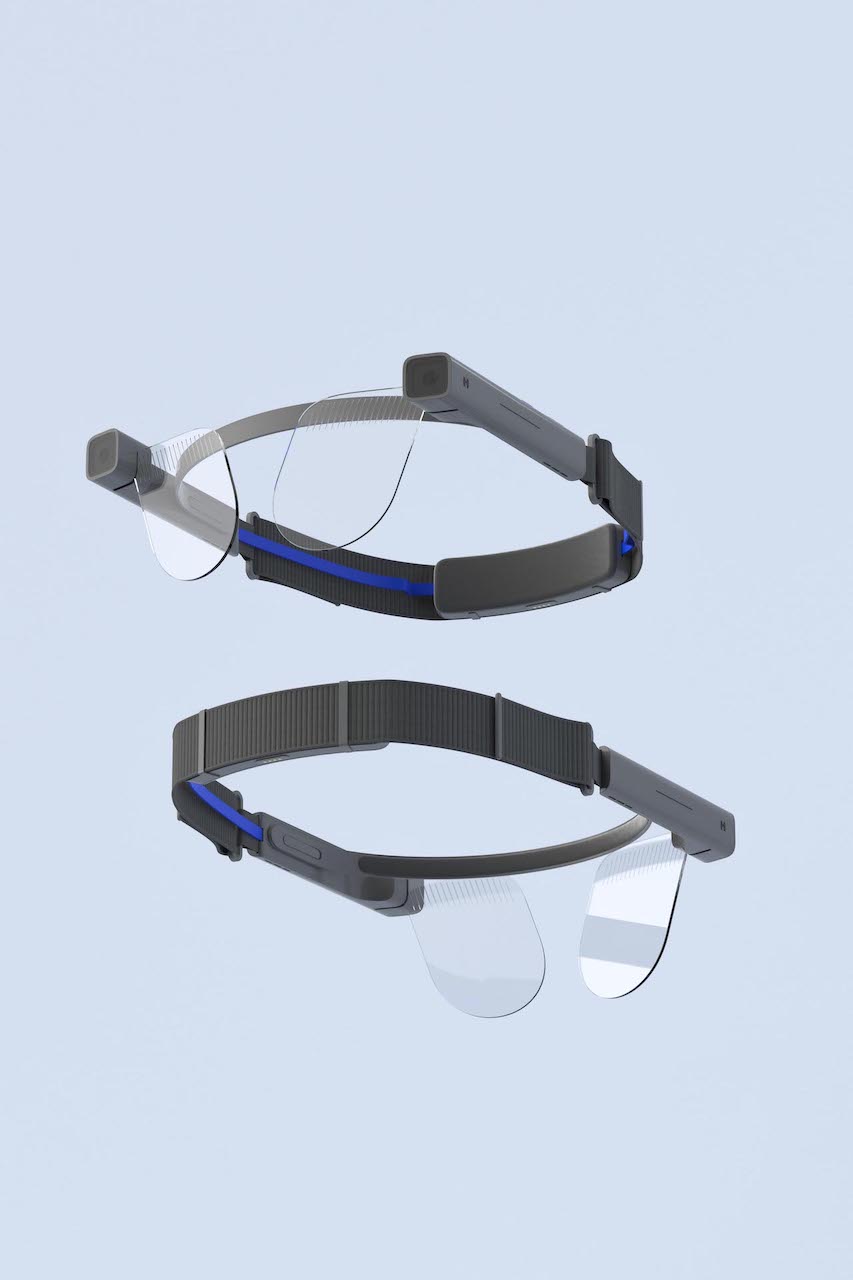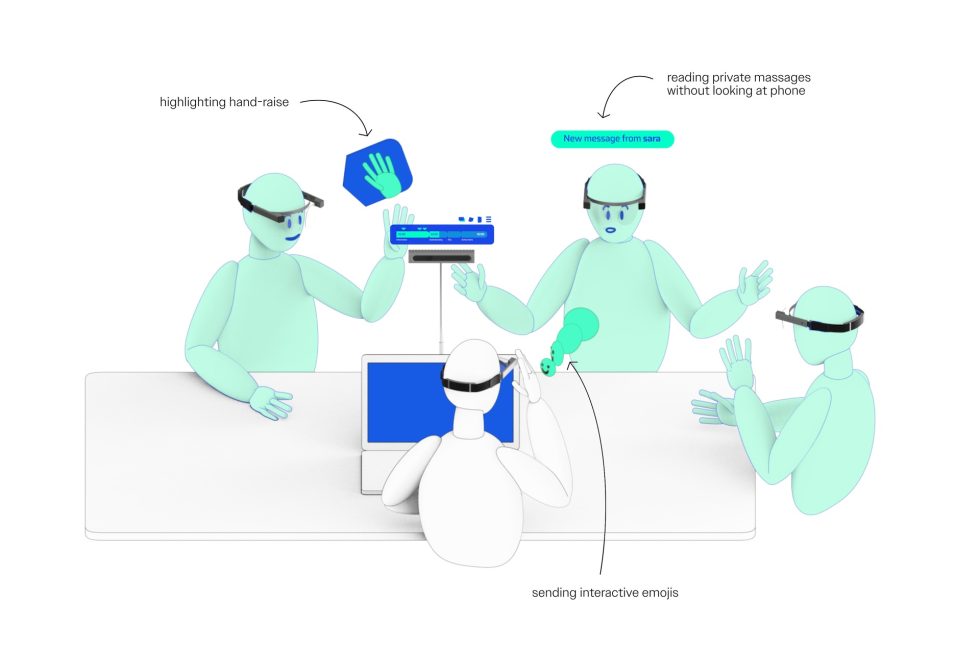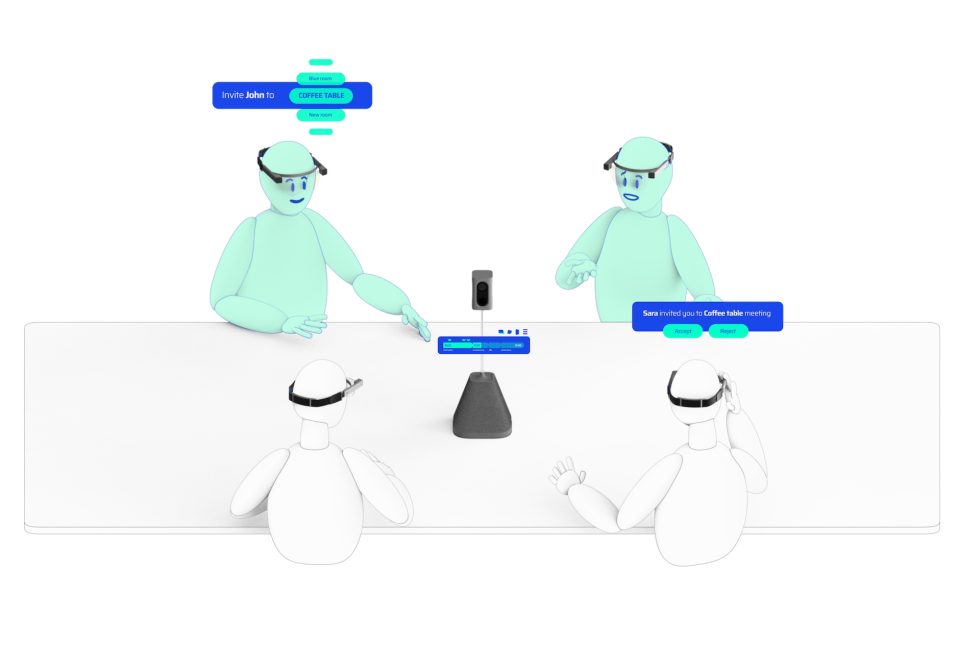Hollaboration
Hybrid work is becoming the norm, which means more people are going to rely on virtual conferencing technology for communication and collaboration on a daily basis. Virtual conferencing technology at its current state fails to capture communication cues like eye-contact, body language, spatial positioning, and layered dialogue, all of which work together to create the fluidity of real-life interactions. At its best, the absence of these cues lead to disengagement or fatigue. At its worst, they can lead to distrust and become a roadblock for creative collaboration.
We determined that the use of holograms would allow virtual calls to regain the feeling of face-to-face interactions. Evaluating the technological innovations in augmented reality wearables and volumetric imaging technology, we proposed a concept for a holographic conferencing system that would capture individuals in 3D and place them in their teammates’ rooms with the use of augmented reality headsets. For our final outcome, we designed a personal webcam for those calling from home, a larger conference camera for the team members calling in from the office, and an augmented reality headset that would be used in both scenarios.




